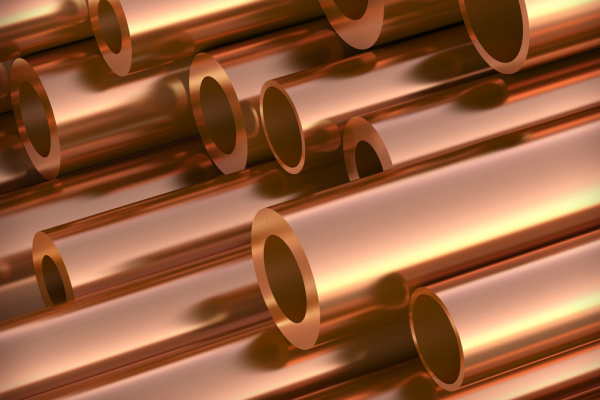Factors affecting copper prices include supply, demand, spot sales of commodities, market pressure, and current inventory levels.

The Main Factors Affecting The Price of Copper
1. Supply and Demand
According to economics, when a commodity is in short supply, its price will fall, otherwise it will rise. At the same time, the price will in turn affect supply and demand. When the price of a commodity rises, supply will increase and demand will decrease. Conversely, demand will rise and supply will decrease. Thus, price and supply, and demand will influence each other.
An important indicator reflecting supply and demand is inventory, which is generally measured by stock exchanges.
2. Economic Situation
Copper is an important industrial raw material and its demand is closely related to the economic situation. When the economy is growing, the demand for copper increases, which leads to higher copper prices. When the economy is in recession, copper demand shrinks and copper prices fall.
3. Import and Export Policies
Import and export policy, especially tariff policy, is an important means to balance domestic supply and demand by adjusting the cost of import and export of commodities and controlling the volume of import and export of commodities.
4. Changes in The Development Trend of The Copper Industry
Consumption is a direct factor affecting the price of copper, and the development of the copper industry is an important factor affecting consumption. With the rapid development of science and technology, the application of copper is expanding, and copper has begun to play a role in medicine, biology, superconductivity, environmental protection, and other fields. These will affect the consumption of copper to varying degrees.
5. Copper Production Costs
The cost of production is the basis for measuring the price level of commodities. The cost of production of copper includes smelting costs and refining costs. The most common economic analysis uses a “cash flow balancing cost” which decreases as the value of by-products increases. Fund Trading Direction Although the fund industry has a long history, it did not flourish until the 1990s. At the same time, fund participation in commodity futures trading has increased significantly. The evolution of the copper market over the last decade shows that funds have played an important role in many large markets.
Of course, there are similar exchange rates that can have some impact on copper prices, but the fundamental factor that determines the movement of copper prices is the supply and demand for copper.

What is the Impact of Copper Prices on Industrial Cables?
As copper prices have been on the rise, it has affected various industries, including the manufacturing and construction industries. One of the most significant impacts of the increase in copper prices has been on the cable industry.
Introduction
Copper is a primary raw material in the production of industrial cables. As a result, fluctuations in copper prices significantly impact the industrial cable industry’s cost structure and overall profitability. This article will examine how the increase in copper prices has affected the industrial cable industry and how manufacturers and consumers are responding to these changes.
Understanding Copper Prices
Before we delve into the impact of copper prices on the copper cable industry, it’s essential to understand how copper prices fluctuate. Copper is a globally traded commodity, and its prices are influenced by various factors, including supply and demand dynamics, geopolitical tensions, and global economic growth.
The Impact of Copper Prices on Industrial Cable Manufacturing
The increase in copper prices has significantly impacted the cost structure of industrial cable manufacturers. Copper wire is the primary component used in the production of industrial cables, and any price increase has a direct impact on the cable’s cost. As a result, manufacturers have been forced to increase their product prices to maintain their profit margins.
The Impact of Copper Prices on Industrial Cable Consumers
As industrial cable manufacturers increase their prices due to the rise in copper prices, consumers are forced to pay more for industrial cables. This increase in prices has a ripple effect on the entire industry, leading to higher costs for construction and manufacturing companies that use industrial cables. Some companies have responded to these changes by seeking alternative materials or reducing their use of industrial cables.
Strategies to Mitigate the Impact of Copper Prices on Industrial Cables
Several strategies can be implemented to mitigate the impact of copper prices on industrial cables. One of the most effective strategies is to hedge against copper price increases. This involves purchasing copper futures contracts, which allows manufacturers to lock in prices and reduce their exposure to price fluctuations.
Another strategy is to find alternative materials that can be used in the production of industrial cables. For example, some manufacturers have started using aluminum wire instead of copper wire. While aluminum wire is cheaper than copper wire, it has a lower conductivity level, which may impact the cable’s performance.
The Future of Copper Prices and Industrial Cables
As global demand for copper continues to increase, it’s expected that copper prices will remain high in the long term. This means that the impact of copper prices on the industrial cable industry will continue to be a significant concern for manufacturers and consumers alike. However, with the implementation of effective strategies such as hedging and alternative material usage, the industry can mitigate these impacts.
Conclusion
In conclusion, the increase in copper prices has had a significant impact on the industrial cable industry. Manufacturers have been forced to increase their prices, which has resulted in higher costs for consumers. However, by implementing effective strategies such as hedging and alternative material usage, the industry can mitigate these impacts and maintain profitability in the long term.